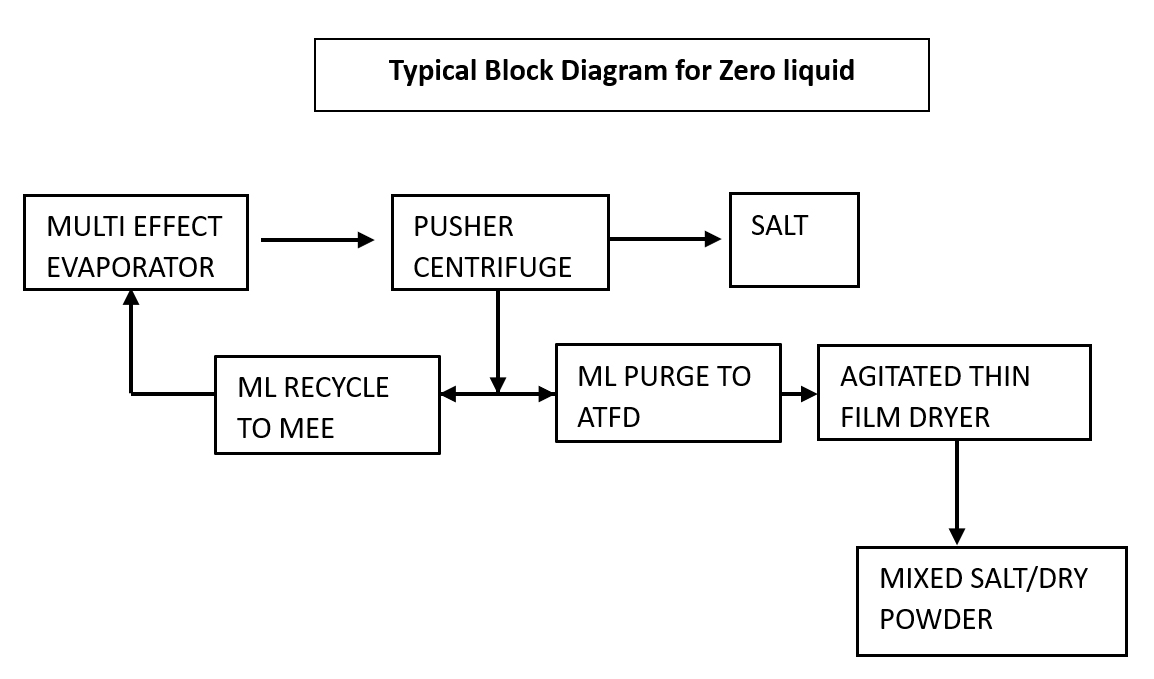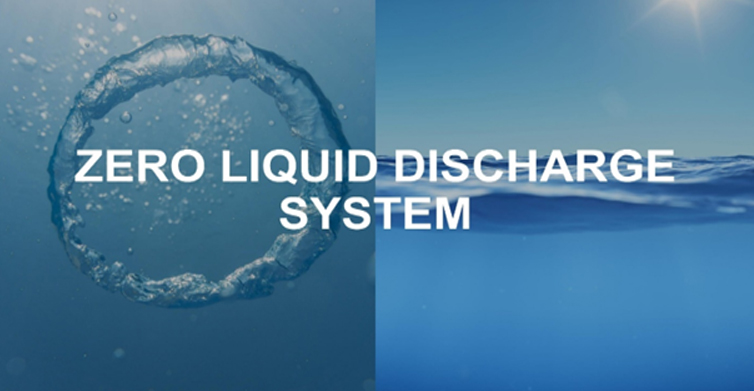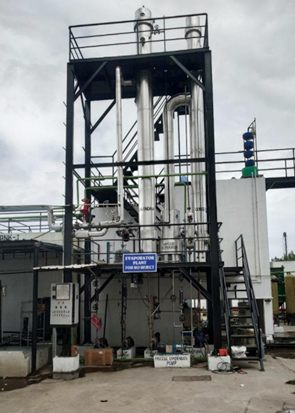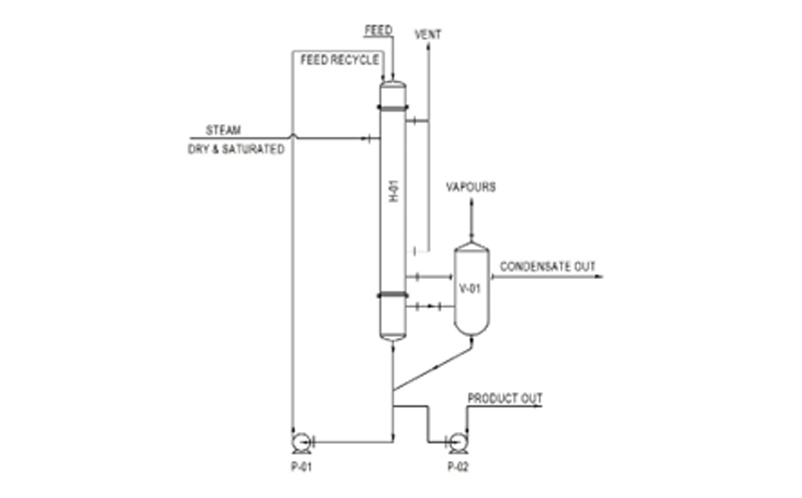This is mechanical Type evaporator; a thin film is achieved through mechanical agitation inside a Cylinder through the Rotor agitator. The liquid is spread at top of cylinder and it Moves downward with rotor which forms a fine Film over the surface due to which evaporation takes place.
In this type of evaporator, the Liquid to be concentrated is pumped to the Top distribution system in such a way that the film is formed inside of the Tubes and slowly travels downward to the bottom of calandria. Due to the thin film formation inside the tubes, the liquid start losing the moisture and evaporation takes place. The liquid path is falling type due to gravity so this type of Evaporator is called Falling Film Evaporator.
The combination of falling film evaporator followed by forced circulation evaporator system is the most economical operation. This combination is suitable for the concentration of more dilute solution to the saturated solution.
The Forced Circulation Evaporator is Most Ideal for the Sticky Material and is mainly used for the higher concentrated liquids whose viscosity is more. The high volumetric flow pumps are there for is required in this type of Evaporator to avoid the stagnation of liquid inside the Tubes.
These operate on a “thermo-siphon” principle. Feed product enters the bottom of the heating tubes and as it heats, steam begins to form. The ascending force of this steam produced during the boiling causes liquid and vapours to flow upwards in parallel flow. At the same time the production of vapor increases and the product is pressed as a thin film on the walls of the tubes, and the liquid rises upwards. This co-current upward movement against gravity has the beneficial effect of creating a high degree of turbulence in the liquid. This is advantageous during evaporation of highly viscous products and products that have a tendency to foul the heating surfaces.
The use of evaporators in industrial effluent treatment plants offers several benefits, including Minimization of water consumption, Volume reduction, Recovery of valuable resources, Concentration of pollutants, Compliance with regulations
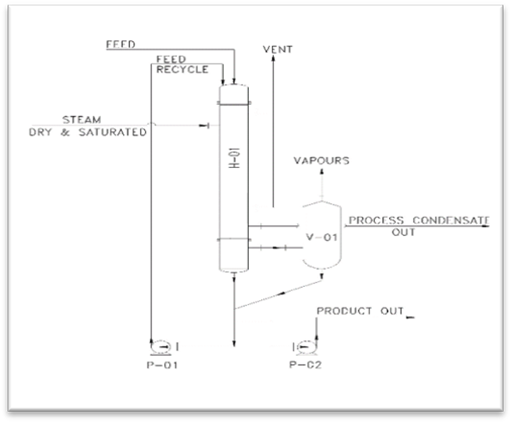
Falling film Evaporator: A Falling Film Evaporator (FFE) is a type of industrial evaporator used in various applications to concentrate or separate liquid solutions. It operates on the principle of creating a thin film of liquid that flows downward inside a heated tube, allowing efficient evaporation and concentration of the liquid.
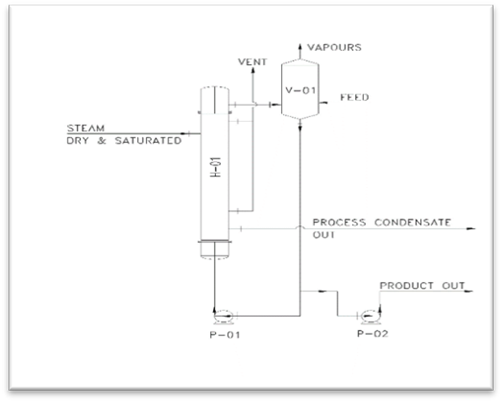
Forced circulation evaporators: It operates on the principle of forcibly circulating the liquid through the evaporator to enhance the heat transfer and evaporation process. Force circulation evaporation (FCE) are partially used for handling viscous or fouling liquids that may have difficulty flowing naturally in a Falling Film Evaporator. They are commonly used for concentrating solutions, crystallization processes, and treating high viscosity fluids or heat sensitive liquids. The design and configuration of a Forced Circulation Evaporator can vary depending on the specific requirement of the application.
MULTIPLE EFFECT EVAPORATOR
A multiple effect evaporator (MEE) is a type of industrial evaporation system used to concentrate a liquid solution. The MEE can be only falling film type or can be only forced circulation type or can be combination of falling film and forced circulation. In MEE the vapor generated in one effect is used to heat the heating medium for next effect, and so on. This design allows for efficient energy utilization, making it an economically viable solution for concentrating liquids.
Energy Efficiency , High Concentration Ratios , Versatility , Heat Integration , Environmental Friendliness etc are few benefits of Multiple Effect Evaporators.
The energy savings and increased efficiency often make MEEs a favorable choice in many industrial application
Advantage of using Thermovapour Recompressor (TVR) in MEE.
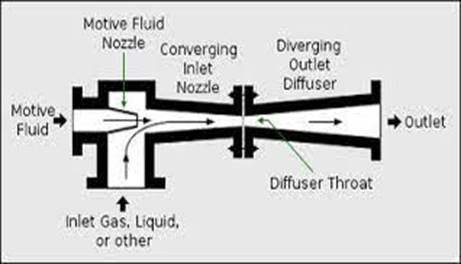
TVR gives highest steam efficiency than direct steam heating as part of the vapours are sucked and combined with motive steam used back again as heating media .
Eg. If we consider Two effect evaporator with thermos vapour recompression (TVR) , it will require 33% less steam than the conventional Two effect evaporator. This means , the steam usage for the Two effect with TVR is comparable to that of Three effect evaporator.
Advantage of using MECHANICAL VAPOUR RECOMPRESSOR in the MEE.
MVR systems are known for their high energy efficiency. Instead of relying on external heat sources, MVR uses mechanical energy to compress the vapor, which requires significantly less energy compared to traditional evaporators or steam-based systems. Using a Mechanical Vapor Recompressor (MVR) in a Multiple Effect Evaporator (MEE) system offers several advantages, similar to those provided by a Thermo Vapor Recompressor (TVR). However, MVR operates through a different mechanism, where mechanical energy is used to recompress the vapor from the previous effect(s) rather than utilizing high-pressure vapor. Here are the advantages of using a Mechanical Vapor Recompressor in an MEE.
While Mechanical Vapor Recompression offers numerous advantages, it's essential to consider the initial capital investment required for setting up an MVR-based MEE system. MVR remains a compelling solution for energy-efficient and cost-effective evaporation processes in various industries.
Using MVR reduces steam consumption thus helping in lowering greenhouse gas emissions associated with steam production.
ZERO LIQUID DISCHARGE (ZLD)
Implementing Zero Liquid Discharge using Multiple Effect Evaporators can significantly reduce the environmental impact of industrial wastewater discharge and promote sustainable water management practices. However, it's important to note that ZLD systems are complex and require careful planning, design, and operation to achieve optimal efficiency and compliance with environmental regulations.
MEE can only concentrate a solution from x % concentration to y% concentration. To achieve ZLD certain equipment’s/systems like Pusher centrifuge and Agitated Thin Film Dryer ( ATFD.
MEE with Pusher centrifuge is used in case the system consists of crystalline solids.
MEE with ATFD is used when the effluent contains non crystalline solids or when the organics in effluent are on higher side.
MEE in combination with pusher centrifuge and ATFD is used when majority of salts are crystalline which are removed in pusher centrifuge and remaining non-crystalline and organics are removed in ATFD.
Typical schemes offered in MEE :-
- 1) Falling Film Evaporators
- 2) Forced Circulation Evaporators
- 3) Multi-Effect Evaporator(MEE) i.e. Combination of Falling & Forced .
- 4) MEE with Pusher Centrifuge
- 5) MEE with Agitated Thin Film Dryer(ATFD)
- 6) MEE with Pusher and ATFD.
- 7) Mechanical Vapour Recompressor (MVR) based MEE
